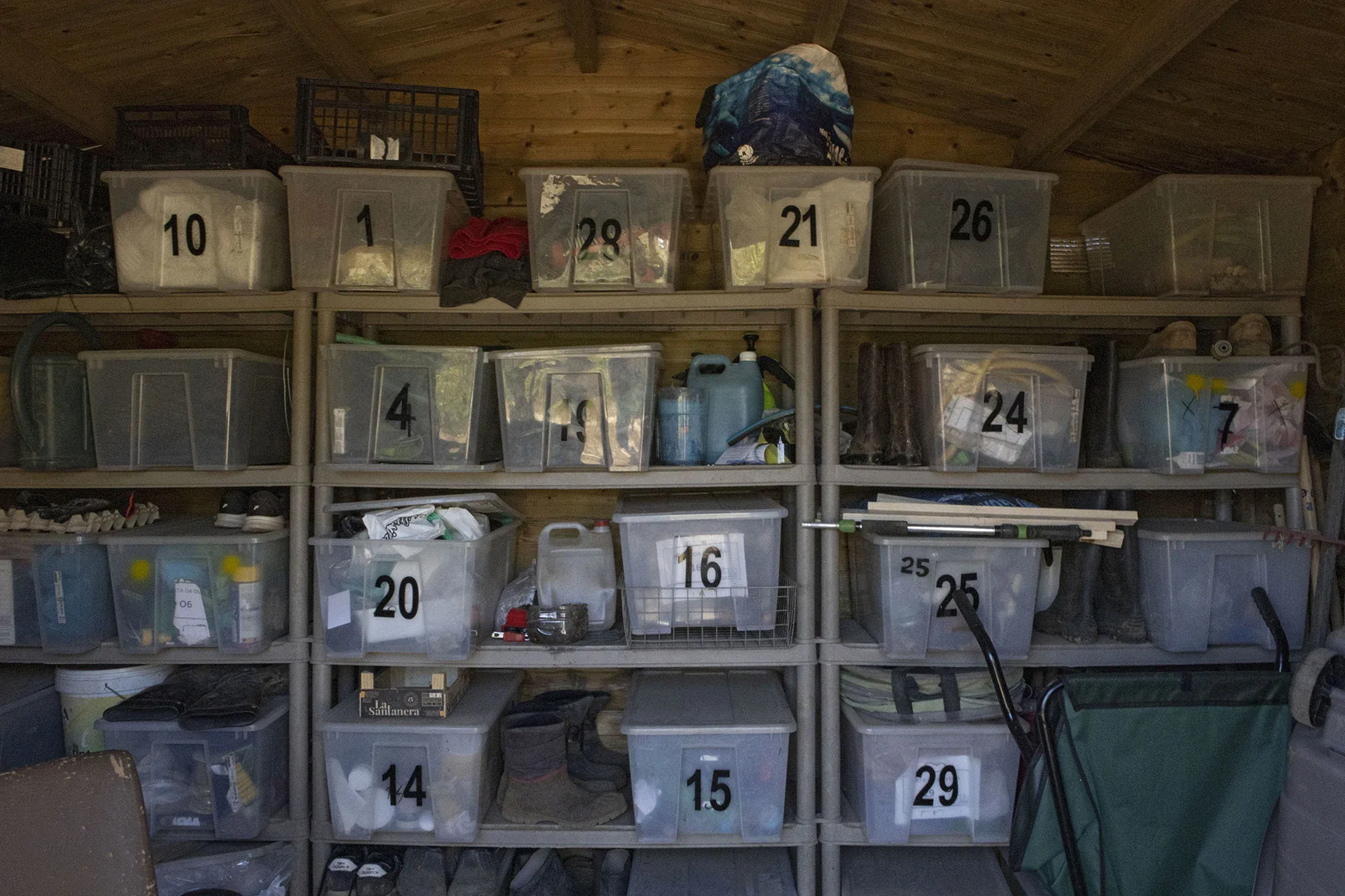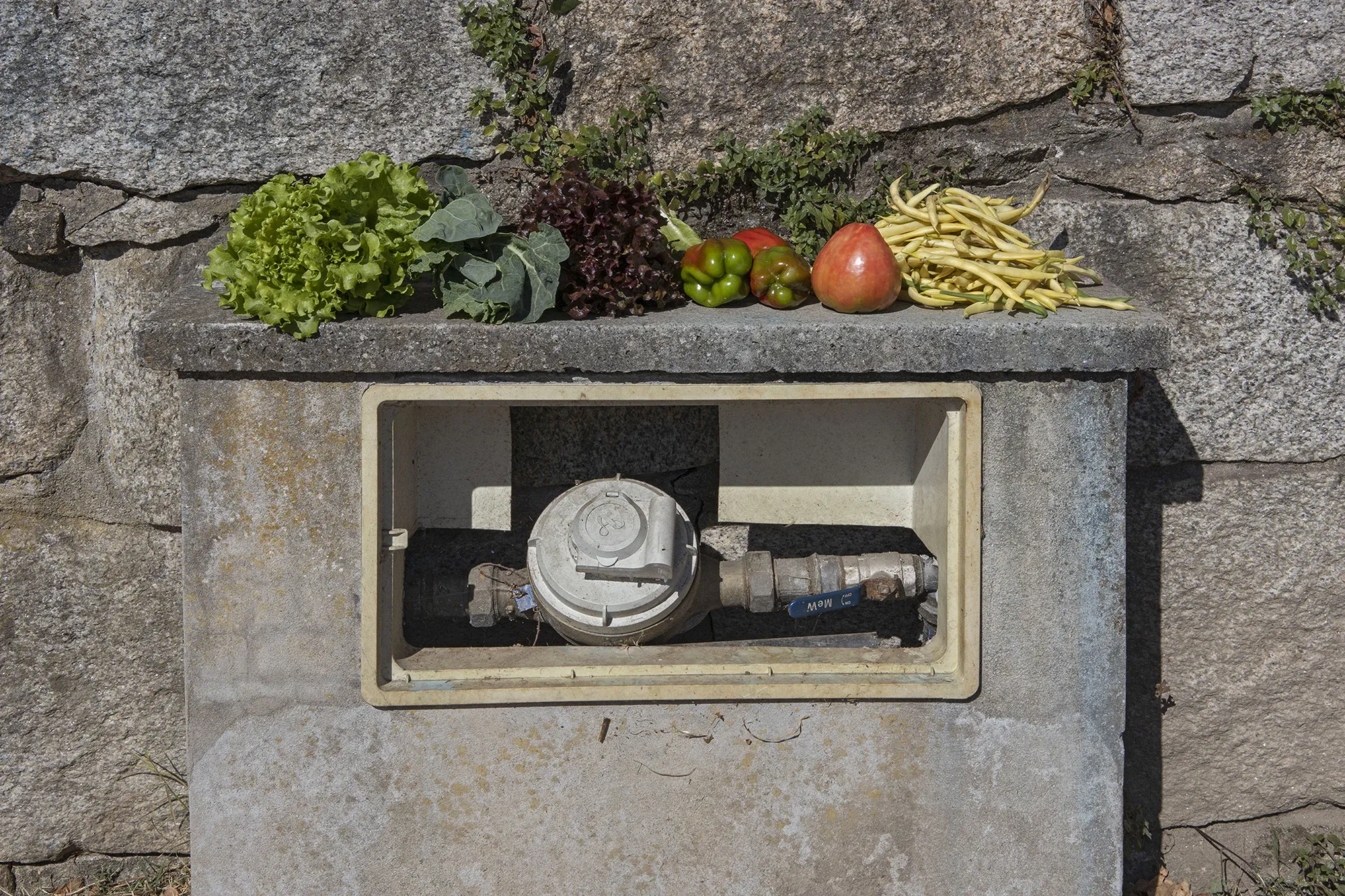Story
It's 9 a.m., but the day is already long for Gilberto Branco. "I often wake up at sunrise to come here," he says, leaning on his hoe and grumbling about the snails that want to eat his peppers and the beanworms climbing the tiny plant. "Look at those crazy people climbing up here already! The good thing is that the ants take care of them." His 71-year-old energy is like that of a cat, because if you don't spend time there, digging and sowing, your head won't be right. "If it weren't for my little garden, I'd go crazy."
The "over there" Gilberto refers to is Horta da Oliveira, the largest municipal garden in Porto, adjacent to Alameda de Cartes Park and the Campanhã Sports Complex. Created in 2017 as part of the "Horta à Porta" (Garden at the Door) project, run by Porto City Hall in partnership with Lipor, the garden is divided into 99 plots, distributed among residents who requested a spot for their crops. There are certain rules to follow: monocultures are prohibited, and agriculture must be organic. Each plot has its own compost bin to renew and nourish the land.
"That's what makes the earth soft," says Gilberto, stirring his compost heaped with kale, eggshells, straw, and "pastéis de Belém" from Carmo. "You don't know what it is?" he asks slyly, before quickly replying, "It's horse manure from the barracks," and letting out a laugh that mingles with the sound of a neighbor's radio. Playback dand Carlos Paião can be heard, the magpies singing, the symphony of a repeating routine reminiscent of the times of rural Campanhã, when the image of Our Lady of Campanhã was carried in procession to the town center to pray for fertile harvests.
Jorge Ricardo Pinto, in "Oporto Oriental no final do século XIX: Um retrato urbano" (O Eastern Port at the end of the 19th century: An urban portrait), portrays Campanhã of yesteryear as a parish of immense natural wealth, which became, in the final centuries of the Middle Ages, an important agricultural reserve for the town, whose main function was to supply the city with basic foodstuffs. The population consisted essentially of peasants, who grew fruit, wheat, barley, rye, and corn. There were also fishermen, concentrated on the banks of the Douro, and millers, who owned 76 mill wheels near the waterways.
The situation would only undergo significant changes in the 19th century, with the Industrial Revolution and the establishment of several factories in Campanhã. But its rural character persists to this day, whether through the people who, like Gilberto, grow their own Gondomar lettuce, carrots, cabbage, and other seasonal produce for their own consumption, or through the activities of educational farms like the Associação Movimento Terra Solta, open on Saturdays for the public to learn about the biodynamic practices practiced there, or through the worship of Nossa Senhora da Campanhã, to whom festivals are dedicated between late August and early September. Just in case, it's best to say a prayer to her every year, lest the mafarrico burn the crops and drive Gilberto Branco completely insane.

